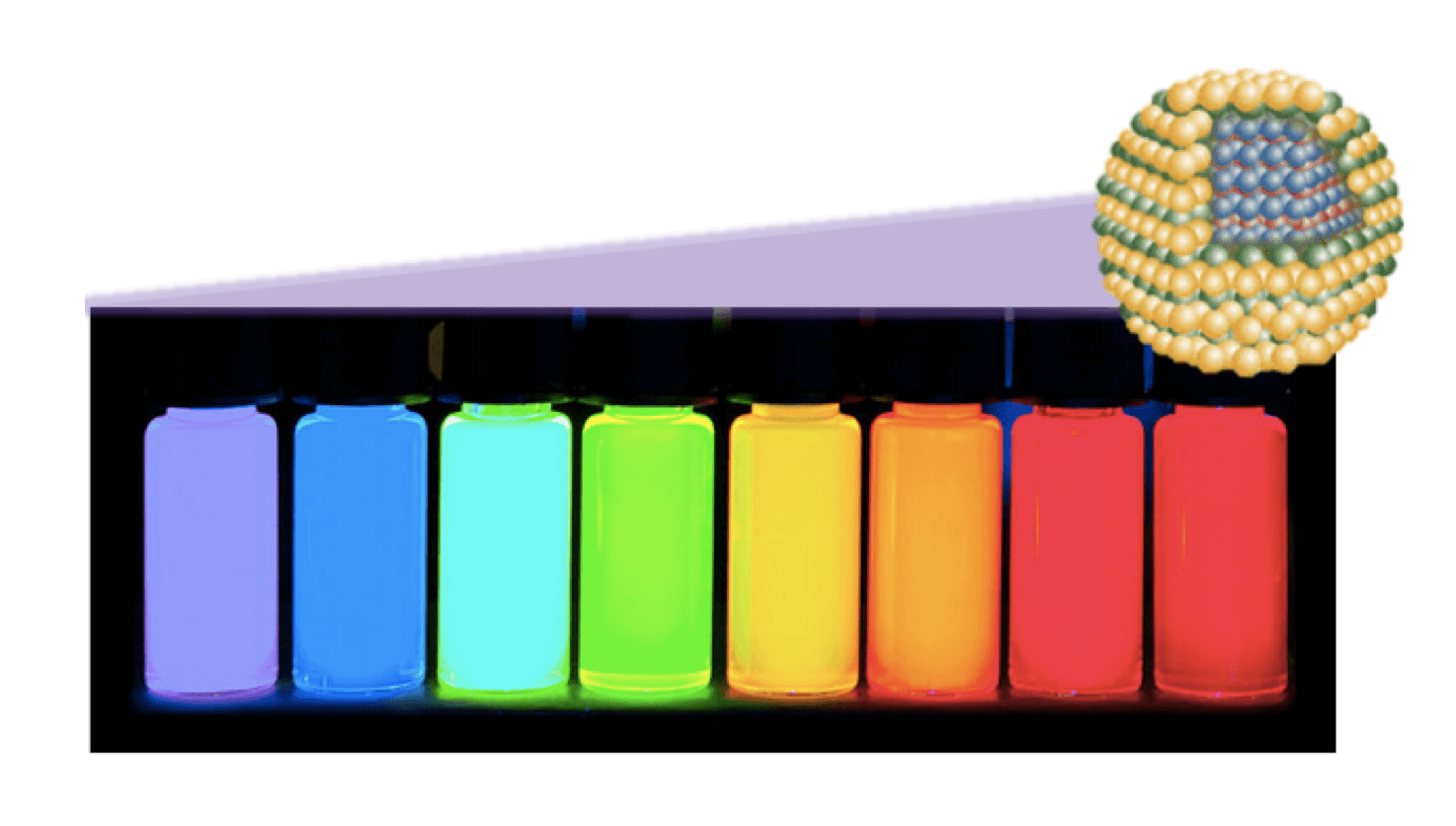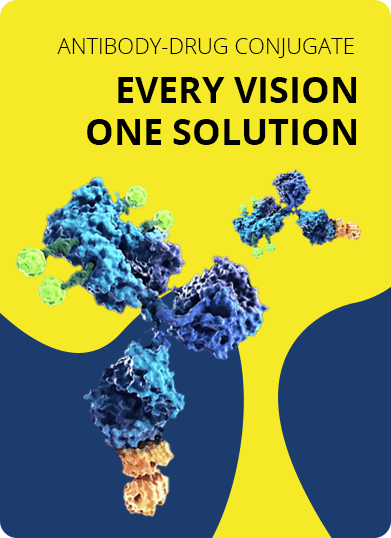- Home
- UTC Development
- Antibody-based Probe Development
- Antibody-QD Probe Development
Antibody-QD Probe Development Service
Quantum dots (QDs) are colloidal semiconductor nanocrystals. Only a few nanometers in size, QDs are small entities but with unique optical and electronic properties. Upon exposure to light or electricity, many QDs will emit light with different frequencies/colors depending on their size, shape and composition. Due to their unique and tunable properties, QDs are of wide interest for a broad range of potential applications, including solid-state quantum computation, generation of photovoltaic and light emitting devices, as well as biomedical imagery. In the areas of biochemical and biomedical studies and applications, QDs are categorized as a class of fluorescent probes with competitive advantages (broad adsorption spectra, tunable emission spectra, and resistance to photochemical degradation) over classical dyes/fluorophores.
 Colloidal quantum dots emit different color light under UV exposure depending on their size, shape and material.
Colloidal quantum dots emit different color light under UV exposure depending on their size, shape and material.
Typically, the most popular QDs are based on a cadmium-selenium (CdSe) core covered by a protective coating layer. The CdSe core emits light within the visible range and is suitable to be used as a contrast agent. The surface coating layer of a QD protects the core from oxidation or other disruptive factors in the surrounding environment and improves the photo-luminescence yield of the core. This core-shell structure of QDs enables the tunability of their optical as well as physicochemical properties, via adjusting the thickness of the protective shell layer or using different coating agents such as zinc-sulfur (ZnS), CdS, ZnSe, Cd-tellurium (CdTe), Lead-Se (PbSe), and silicon dioxide (SiO2—silica). Moreover, other factors that play important roles in tuning the properties of QDs include the synthetic process, environment temperature, and properties of the solvent/ligand mixtures, which influence the structure and properties of the formed nanocrystals.
Advantages of QDs, including their fast action, high quantum yields, broad emission spectra, as well as their application for multicolor in vivo visualization, make QDs an excellent class of fluorescent probe candidates for a broad range of biochemical and biomedical applications. However, the major drawback of QDs, which is their relatively high toxicity, limits their clinical applications. Therefore, the reduction of toxicity and improvement of biocompatibility and bio-affinity of QDs are important and the center of interests. The most commonly used and straightforward strategy to decrease toxicity and increase biocompatibility is the conjugation of QDs with various chemical or biological compounds, e.g., antibodies, polypeptides, oligonucleotides, and a series of synthetic polymers. Due to the presence of tunable protective shells, there are diverse functional groups such as -COOH, -NH2, or -SH on the surface of QDs, which enable the conjugation of QDs with a broad range of organic compounds through chemical or biochemical interactions. The conjugation process can be achieved either via direct reactions between functional groups on QDs and the other organic compounds, or by using specific linkers to serve as bridges between QDs and the other components.
QD-based bio-conjugates, combining the advantages of all components and efficiently avoiding their fatal drawbacks, have been under wide investigations and have shown high potential in diverse theranostics applications. In particular, the antibody-quantum dot conjugates are excellent candidates as probes for a broad range of theranostic applications, including high-resolution imagery, diagnosis of certain diseases, and simultaneous/triggered release of drugs at specific site. Antibodies can efficiently direct antibody-quantum dot probes to their targets, which reduces both dosage requirements and side effects of QDs to untargeted sites during their transportation in the body.
Creative Biolabs provides custom antibody-quantum dot probes with high luminescence yield and excellent bio-affinity for diverse theranostic applications. Experienced in bio-conjugates development, Creative Biolabs produces antibody-quantum dot probes through efficient and economic conjugation strategies yielding probes with high homogeneity. With a large antibody library and QD library, antibody-quantum dot probe products from Creative Biolabs can fulfill customers’ special requirements. Besides, our scientific team at Creative Biolabs also provides customers with services in customizing antibody-quantum dot derivatives. Please contact us for more information and a detailed quote.
For Research Use Only. NOT FOR CLINICAL USE.

Online Inquiry
Welcome! For price inquiries, please feel free to contact us through the form on the left side. We will get back to you as soon as possible.
